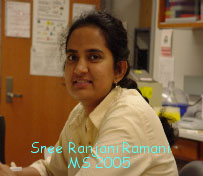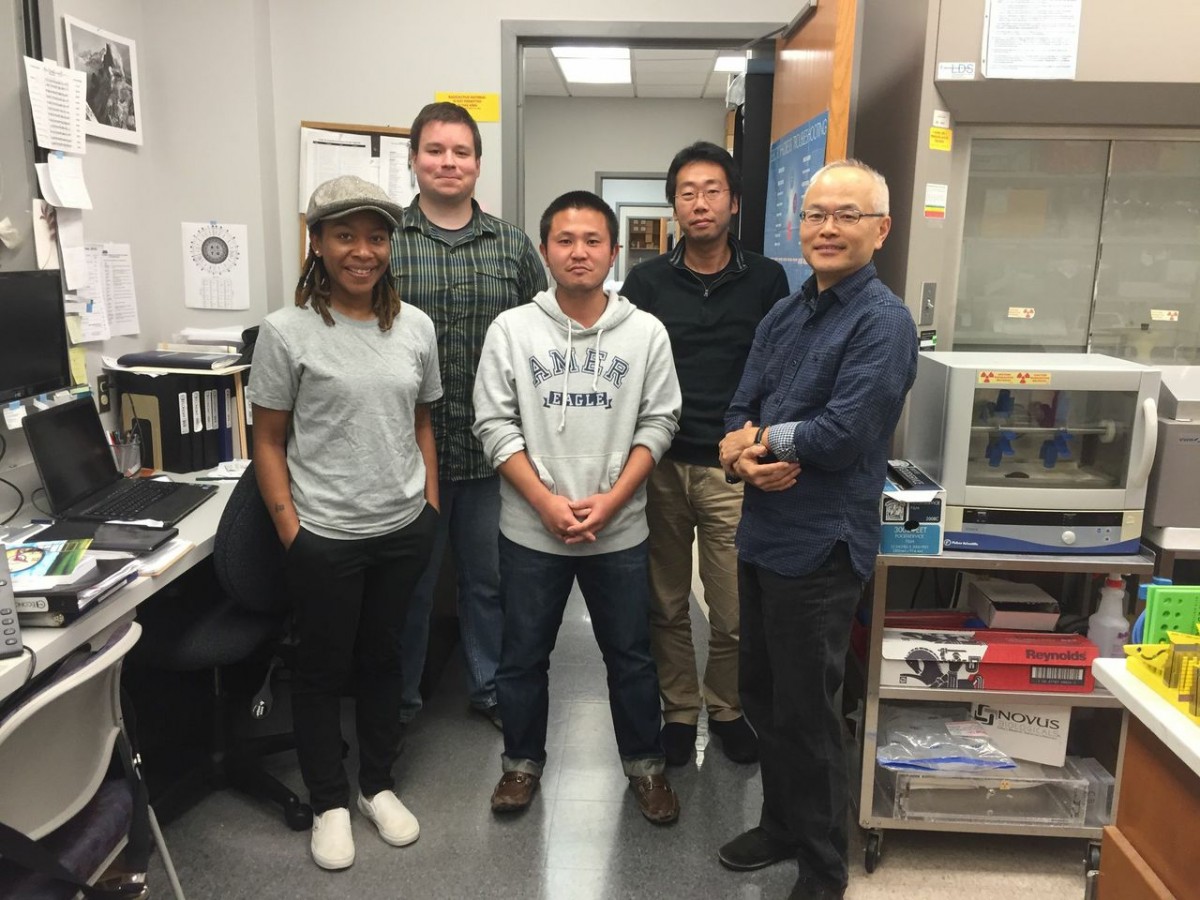 Principal Investigator: Yoshiaki Tsuji, PhD,
Principal Investigator: Yoshiaki Tsuji, PhD,
Professor
Department of Biological Sciences, Environmental and Molecular Toxicology Program
Phone: 919-513-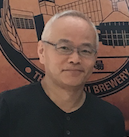 1106
1106
Fax: 919-515-7169
e-mail: yoshiaki_tsuji@ncsu.edu
Lab: Rm #2230, #2232, and #2232A, Office: Rm #2203
Ph.D. in Cell Biology, Hiroshima University School of Medicine, Hiroshima, Japan
Postdoctoral Fellow, Stanford University School of Medicine, Palo Alto, California
Gretta Lamb (2025 BS in Biochemistry, MS Biochemistry 2025-)
Zekai Zheng (2025 BS Zoology, Research Assistant)
Akshita Govindaraj (undergraduate student, Environmental Sciences)
Former Lab Members and Graduate Students
Masaki Miyazawa, PhD (Postdoctoral fellow, 5. 2011~9.2017)
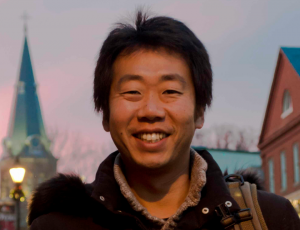
The goal of my current research is to investigate the molecular interphase between genotoxic drugs and cellular stress response. In particular, my research focuses on intracellular localization and expression of Shc proteins and regulation of antioxidant genes under genotoxic and oxidative stress conditions. p66Shc, one isoform of Shc, appears to be a mitochondrial adaptor protein to control oxidative stress response; however, its roles in cell signaling and mitochondrial homeostasis have been incompletely understood. My work in this project is to clarify the involvement of p66Shc in genotoxic and oxidative stress through characterization of a specific signaling pathway leading to mitochondrial expression of p66Shc and its impact on cellular antioxidant gene expression.
M. Miyazawa, Y. Tsuji
“Evidence for a Novel Antioxidant Function and Isoform-specific Regulation of the Human p66Shc Gene”
Mol. Biol. Cell 25: 2116-2127 (2014)
B.W. Huang, M. Miyazawa, Y. Tsuji
Distinct Regulatory Mechanisms of the Human Ferritin Gene by Hypoxia and Hypoxia Mimetic Cobalt Chloride at the Transcriptional and Post-transcriptional Levels
Cell. Signal., 26: 2702-2709 (2014)
A.R. Bogdan, M. Miyazawa, K. Hashimoto, Y. Tsuji
“Regulators of Iron Homeostasis: new players in metabolism, cell death, and disease”
Trends Biochem. Sci., 41: 274-286 (2016)
B. R. Wilson, A. R. Bogdan, M. Miyazawa, K. Hashimoto, Y. Tsuji
“Siderophores in Iron Metabolism: From Mechanism to Therapy Potential”
Trends Mol. Med., 22: 1077-1090 (2016)
M. Miyazawa*, A. R. Bogdan*, K. Hashimoto, Y. Tsuji
“Regulation of Transferrin Receptor-1 mRNA by the Interplay between IRE-binding Proteins and miR-7/miR-141 in the 3′-IRE Stem-loops”
RNA, 24: 468-479 (2018)
M. Miyazawa, A. R. Bogdan, Y. Tsuji
“Perturbation of Iron Metabolism by Cisplatin through Inhibition of Iron Regulatory Protein 2 (IRP2)”
Cell Chem. Biol.,26:85-97 (2019)
Kazunori Hashimoto, PhD (Postdoctoral Fellow, 4. 2012~12.2017 )

My research goal is to investigate how neurological diseases affect the normal cellular responses to genotoxic and oxidative stress including arsenic. Arsenic is naturally found throughout the earth’s crust and is widely distributed throughout the environment. Long-term exposure to arsenic from water and food can cause skin lesions and cancer, and has also been associated with many neurological diseases. Currently, my work elucidates protective cellular response against arsenic, particularly through homeodomain interacting protein kinase 2 (HIPK2) activation. HIPK2 is a serine/threonine kinase that phosphorylates CREB and ATF1 transcription factors at novel sites. However, the roles of the novel phosphorylation sites remain elusive. My research focuses on how HIPK2 regulates a cellular defense system under genotoxic and oxidative stress through new phosphorylation of CREB and ATF-1.
K. Hashimoto, AN. Simmons, R. Kajino-Sakamoto, Y. Tsuji, J. Ninomiya-Tsuji.
TAK1 regulates the Nrf2 antioxidant system through modulating p62/ SQSTM1.
Antioxid Redox Signal. 25: 953-964 (2016)
A. R. Bogdan, M. Miyazawa, K. Hashimoto, Y. Tsuji
“Regulators of Iron Homeostasis: new players in metabolism, cell death, and disease”
Trends Biochem. Sci., 41: 274-286 (2016)
B. R. Wilson, A. R. Bogdan, M. Miyazawa, K. Hashimoto, Y. Tsuji
“Siderophores in Iron Metabolism: From Mechanism to Therapy Potential”
Trends Mol. Med., 22: 1077-1090 (2016)
K. Hashimoto, Y. Tsuji
“Arsenic-induced Activation of the Homeodomain Interacting Protein Kinase 2 (HIPK2) to cAMP-response element binding protein (CREB) Axis”
J. Mol. Biol., 429: 64-78 (2017)
K. Hashimoto, R. Majumdar, Y. Tsuji
“Nuclear Lamins and Progerin Are Dispensable for Antioxidant Nrf2 Response to Arsenic and Cadmium”
Cell. Signal., 33: 69-78 (2017)
Alexander Bogdan (PhD student in Toxicology, 1.2011 ~ 11.2016)
Iron is an essential micronutrient, serving as a critical co-factor in cellular processes such as DNA replication and ATP generation. How ever, intracellular iron can undergo redox chemistry, catalyzing the formation of damaging reactive oxygen species. To ensure that cells maintain an adequate but nontoxic amount of iron, the expression of genes involved in iron metabolism (IM) is tightly regulated both transcriptionally and post-transcriptionally, via mRNA-binding Iron Regulatory Proteins. Recently, microRNAs are recognized as central mediators in the post-transcriptional regulation of genes, but the both the role of microRNAs in IM and the interplay of microRNAs with other post-transcriptional regulation systems are unclear. My research focuses on how microRNAs regulate expression of IM genes, and how microRNAs act in concert with or in opposition to Iron Regulatory Proteins in managing expression of IM genes.
ever, intracellular iron can undergo redox chemistry, catalyzing the formation of damaging reactive oxygen species. To ensure that cells maintain an adequate but nontoxic amount of iron, the expression of genes involved in iron metabolism (IM) is tightly regulated both transcriptionally and post-transcriptionally, via mRNA-binding Iron Regulatory Proteins. Recently, microRNAs are recognized as central mediators in the post-transcriptional regulation of genes, but the both the role of microRNAs in IM and the interplay of microRNAs with other post-transcriptional regulation systems are unclear. My research focuses on how microRNAs regulate expression of IM genes, and how microRNAs act in concert with or in opposition to Iron Regulatory Proteins in managing expression of IM genes.
A.R. Bogdan, M. Miyazawa, K. Hashimoto, Y. Tsuji
“Regulators of Iron Homeostasis: new players in metabolism, cell death, and disease”
Trends Biochem. Sci., 41: 274-286 (2016)
B. R. Wilson*, A. R. Bogdan*, M. Miyazawa, K. Hashimoto, Y. Tsuji
“Siderophores in Iron Metabolism: From Mechanism to Therapy Potential”
Trends Mol. Med., 22: 1077-1090 (2016) *Co-first author
M. Miyazawa*, A. R. Bogdan*, K. Hashimoto, Y. Tsuji
“Regulation of Transferrin Receptor-1 mRNA by the Interplay between IRE-binding Proteins and miR-7/miR-141 in the 3′-IRE Stem-loops”
RNA, 24: 468-479 (2018) *Co-first author
M. Miyazawa, A. R. BogdanA. R. Bogdan, Y. Tsuji
“Perturbation of Iron Metabolism by Cisplatin through Inhibition of Iron Regulatory Protein 2 (IRP2)”
Cell Chem. Biol.,26:85-97 (2019)
Briana Roulhac-Wilson (MS in Physiology, 6. 2014~ 7.2016)
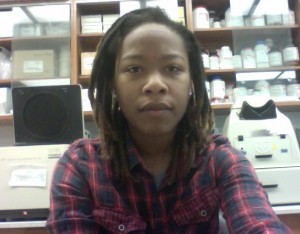 Mechanisms that limit cellular damage as a result of environmental insults are necessary to prevent common human diseases such as cancer and neurodegeneration. These mechanisms involve crucial cell signaling pathways and oxidative stress responses. The cAMP-response element binding (CREB) protein is an important transcription factor involved in the well-characterized PKA pathway. However, CREB’s function in cell signaling pathways that respond to such insults remains poorly understood. Previously this lab found a novel CREB phosphorylation site. My research focuses on further characterizing this new phosphorylation site, as well as elucidating its place in less well-characterized pathways. Regulation and expression of cellular oxidative stress genes also have an important role in maintaining cellular viability. Ferritin H, a component of the iron chelator protein ferritin, plays an integral role in preventing oxidative stress in the cell. I am interested in the mechanisms by which the ferritin H transcript may be stabilized following stressful stimuli.
Mechanisms that limit cellular damage as a result of environmental insults are necessary to prevent common human diseases such as cancer and neurodegeneration. These mechanisms involve crucial cell signaling pathways and oxidative stress responses. The cAMP-response element binding (CREB) protein is an important transcription factor involved in the well-characterized PKA pathway. However, CREB’s function in cell signaling pathways that respond to such insults remains poorly understood. Previously this lab found a novel CREB phosphorylation site. My research focuses on further characterizing this new phosphorylation site, as well as elucidating its place in less well-characterized pathways. Regulation and expression of cellular oxidative stress genes also have an important role in maintaining cellular viability. Ferritin H, a component of the iron chelator protein ferritin, plays an integral role in preventing oxidative stress in the cell. I am interested in the mechanisms by which the ferritin H transcript may be stabilized following stressful stimuli.
B. R. Wilson*, A. R. Bogdan*, M. Miyazawa, K. Hashimoto, Y. Tsuji
“Siderophores in Iron Metabolism: From Mechanism to Therapy Potential”
Trends Mol. Med., 22: 1077-1090 (2016) *Co-first author
Sree Ranjani Ramani 12. 2003 – 6. 2005, MS
Kiros Hailemariam 3. 2002 – 4. 2007, PhD
• K. Hailemariam, K. Iwasaki, B-W. Huang, K. Sakamoto, Y. Tsuji
“Transcriptional regulation of ferritin and antioxidant genes by HIPK2 in genotoxic stress”
J. Cell Sci., 123: 386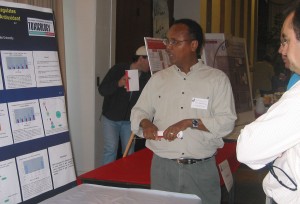 3-3871 (2010)
3-3871 (2010)
• K. Sakamoto, B-W. Huang, K. Iwasaki, K. Hailemariam, J. Ninomiya-Tsuji, Y. Tsuji
“Regulation of Genotoxic Stress Response by Homeodomain-interacting Protein Kinase 2 through Phosphorylation of Cyclic AMP Response Element-binding Protein at Serine 271”
Mol. Biol. Cell 21: 2966-2974 (2010)
• K. Iwasaki, K. Hailemariam, Y. Tsuji.
“Protein Inhibitor of Activated STAT3 (PIAS3) Interacts with Activating Transcription Factor 1 (ATF1) and Regulates an Antioxidant Responsive Element of the Human Ferritin H Gene”
J. Biol. Chem., 282: 22335-22343 (2007)
• K. Iwasaki, E. L. MacKenzie, K. Hailemariam, K. Sakamoto, Y. Tsuji.
“Hemin-mediated Regulation of an Antioxidant Responsive Element of the Human Ferritin H Gene and Role of Ref-1 during Erythroid Differentiation of K562 Cells”
Mol. Cell. Biol., 26: 2845-2856 (2006).
Elizabeth MacKenzie 3. 2003 – 2. 2007, PhD

• E.L. MacKenzie, P. D. Ray, Y. Tsuji.
“Role and Regulation of Ferritin H in Rotenone-mediated Mitochodrial Oxidative Stress”
Free Radic. Biol. Med., 44: 1762-1771 (2008)
• E.L. MacKenzie, Y. Tsuji.
“Elevated Intracellular Calcium Increases Ferritin H Expression through an NFAT-independent Posttranscriptional Mechanism Involving mRNA Stabilization”,
Biochem. J., 411: 107-113 (2008)
• E.L. MacKenzie, K. Iwasaki, Y. Tsuji
“Intracellular Iron Transport and Storage: From Molecular Mechanisms to Health Implications”
Antioxid. Redox Signaling, 10: 997-1030 (2008)
• K. Iwasaki*, E. L. MacKenzie*, K. Hailemariam, K. Sakamoto, Y. Tsuji.
“Hemin-mediated Regulation of an Antioxidant Responsive Element of the Human Ferritin H Gene and Role of Ref-1 during Erythroid Differentiation of K562 Cells”
Mol. Cell. Biol., 26: 2845-2856 (2006).
• E. L. MacKenzie “Reactive Oxygen/reactive Metabolites and Toxicity”
Chapter 20 In Molecular and Biochemical Toxicology, 4th Edition, R.C. Smart and E. Hodgson, Wiley Interscience, 389-411 (2008)
Kensuke Sakamoto 4. 2005 – 2. 2009, PhD
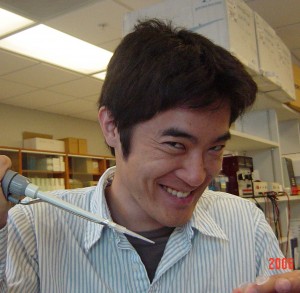
• K. Iwasaki, P.D. Ray, B.W Huang. K. Sakamoto, T. Kobayashi, Y Tsuji,
“Role of AMP-activated Protein Kinase in Ferritin H Gene Expression by Resveratrol in Human T Cells”
Biochemistry 52: 5075-5083 (2013)
• K. Hailemariam, K. Iwasaki, B-W. Huang, K. Sakamoto, Y. Tsuji
“Transcriptional regulation of ferritin and antioxidant genes by HIPK2 in genotoxic stress”
J. Cell Sci., 123: 3863-3871 (2010)
• K. Sakamoto, B-W. Huang, K. Iwasaki, K. Hailemariam, J. Ninomiya-Tsuji, Y. Tsuji
“Regulation of Genotoxic Stress Response by Homeodomain-interacting Protein Kinase 2 through Phosphorylation of Cyclic AMP Response Element-binding Protein at Serine 271”
Mol. Biol. Cell 21: 2966-2974 (2010)
• K. Sakamoto, K. Iwasaki, H. Sugiyama, Y. Tsuji
“Role of the Tumor Suppressor PTEN in Antioxidant Responsive Element-mediated Transcription and Associated Histone Modifications”
Mol. Biol. Cell 20: 1606-1617 (2009)
• K. Iwasaki, E. L. MacKenzie, K. Hailemariam, K. Sakamoto, Y. Tsuji.
“Hemin-mediated Regulation of an Antioxidant Responsive Element of the Human Ferritin H Gene and Role of Ref-1 during Erythroid Differentiation of K562 Cells”
Mol. Cell. Biol., 26: 2845-2856 (2006).
Paul Ray 12. 2006 – 6. 2012, PhD
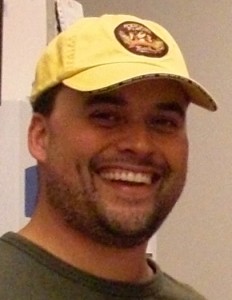
• P.D Ray, B.W Huang, Y. Tsuji
“Coordinated Regulation of Nrf2 and Histone H3 Serine 10 Phosphorylation in Arsenite-activated Transcription of the Human Heme Oxygenase-1 Gene”
BBA – Gene Regulatory Mechanisms, 1849: 1277-1288 (2015)
• K. Iwasaki, P.D. Ray, B.W Huang, K. Sakamoto, T. Kobayashi, Y Tsuji,
“Role of AMP-activated Protein Kinase in Ferritin H Gene Expression by Resveratrol in Human T Cells”.
Biochemistry 52: 5075-5083 (2013)
• B.W Huang, P.D. Ray, K. Iwasaki, Y. Tsuji
“Transcriptional Regulation of the Human Ferritin Gene by Coordinated Regulation of Nrf2 and Protein Arginine Methyltransferases PRMT1 and PRMT4”
FASEB J., 27: 3763-3774 (2013)
• P.D Ray, B.W Huang, Y. Tsuji.
“Reactive Oxygen Species (ROS) Homeostasis and Redox Regulation in Cellular Signaling”
Cell. Signal., 24: 981-990 (2012)
• E.L. MacKenzie, P. D. Ray, Y. Tsuji.
“Role and Regulation of Ferritin H in Rotenone-mediated Mitochodrial Oxidative Stress”
Free Radic. Biol. Med., 44: 1762-1771 (2008)
Bo-Wen Huang 5. 2007 – 7.2012, PhD
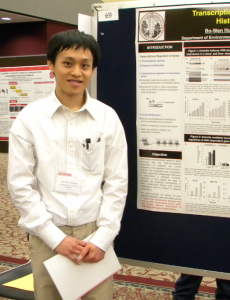
• P.D Ray, B.W Huang, Y. Tsuji
“Coordinated Regulation of Nrf2 and Histone H3 Serine 10 Phosphorylation in Arsenite-activated Transcription of the Human Heme Oxygenase-1 Gene”
BBA – Gene Regulatory Mechanisms, 1849: 1277-1288 (2015)
• B.W Huang, M. Miyazawa, Y. Tsuji
Distinct Regulatory Mechanisms of the Human Ferritin Gene by Hypoxia and Hypoxia Mimetic Cobalt Chloride at the Transcriptional and Post-transcriptional Levels
Cell. Signal., 26: 2702-2709 (2014)
• B.W Huang, P.D. Ray, K. Iwasaki, Y. Tsuji
“Transcriptional Regulation of the Human Ferritin Gene by Coordinated Regulation of Nrf2 and Protein Arginine Methyltransferases PRMT1 and PRMT4”
FASEB J., 27: 3763-3774 (2013)
• K. Iwasaki, P.D. Ray, B.W Huang, K. Sakamoto, T. Kobayashi, Y Tsuji,
“Role of AMP-activated Protein Kinase in Ferritin H Gene Expression by Resveratrol in Human T Cells”.
Biochemistry 52: 5075-5083 (2013)
• P.D Ray, B.W Huang, Y. Tsuji.
“Reactive Oxygen Species (ROS) Homeostasis and Redox Regulation in Cellular Signaling”
Cell. Signal., 24: 981-990 (2012)
• K. Hailemariam, K. Iwasaki, B-W. Huang, K. Sakamoto, Y. Tsuji
“Transcriptional regulation of ferritin and antioxidant genes by HIPK2 in genotoxic stress”
J. Cell Sci., 123: 3863-3871 (2010)
• K. Sakamoto, B-W. Huang, K. Iwasaki, K. Hailemariam, J. Ninomiya-Tsuji, Y. Tsuji
“Regulation of Genotoxic Stress Response by Homeodomain-interacting Protein Kinase 2 through Phosphorylation of Cyclic AMP Response Element-binding Protein at Serine 271”
Mol. Biol. Cell 21: 2966-2974 (2010)
Lab Technician/Trainees
Rima Majumdar, MS (10. 2011 – 5. 2013)
Rima joined our group in October 2011 and investigated the roles of 1) CREB and ATF1 transcription factors and 2) nuclear lamins, in antioxidant cellular response to environmental toxicants, in particular, arsenic.

K. Hashimoto, R. Majumdar, Y. Tsuji
“Nuclear Lamins and Progerin Are Dispensable for Antioxidant Nrf2 Response to Arsenic and Cadmium”
Cell. Signal., 33: 69-78 (2017)
Kenta Iwasaki, PhD (Postdoctoral Fellow, 11. 2003 – 3. 2008)
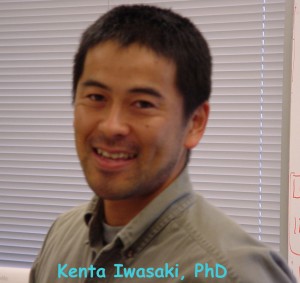
• K. Iwasaki, P.D. Ray, B.W Huang. K. Sakamoto, T. Kobayashi, Y Tsuji,
“Role of AMP-activated Protein Kinase in Ferritin H Gene Expression by Resveratrol in Human T Cells”.
Biochemistry 52: 5075-5083 (2013)
• B.W Huang, P.D. Ray, K. Iwasaki, Y. Tsuji
“Transcriptional Regulation of the Human Ferritin Gene by Coordinated Regulation of Nrf2 and Protein Arginine Methyltransferases PRMT1 and PRMT4”
FASEB J., 27: 3763-3774 (2013)
• K. Hailemariam, K. Iwasaki, B-W. Huang, K. Sakamoto, Y. Tsuji
“Transcriptional regulation of ferritin and antioxidant genes by HIPK2 in genotoxic stress”
J. Cell Sci., 123: 3863-3871 (2010)
• K. Sakamoto, B-W. Huang, K. Iwasaki, K. Hailemariam, J. Ninomiya-Tsuji, Y. Tsuji
“Regulation of Genotoxic Stress Response by Homeodomain-interacting Protein Kinase 2 through Phosphorylation of Cyclic AMP Response Element-binding Protein at Serine 271”
Mol. Biol. Cell 21: 2966-2974 (2010)
• E.L. MacKenzie, K. Iwasaki, Y. Tsuji
“Intracellular Iron Transport and Storage: From Molecular Mechanisms to Health Implications”
Antioxid. Redox Signaling, 10: 997-1030 (2008)
• K. Iwasaki, K. Hailemariam, Y. Tsuji.
“Protein Inhibitor of Activated STAT3 (PIAS3) Interacts with Activating Transcription Factor 1 (ATF1) and Regulates an Antioxidant Responsive Element of the Human Ferritin H Gene”
J. Biol. Chem., 282: 22335-22343 (2007)
• K. Iwasaki, E. L. MacKenzie, K. Hailemariam, K. Sakamoto, Y. Tsuji.
“Hemin-mediated Regulation of an Antioxidant Responsive Element of the Human Ferritin H Gene and Role of Ref-1 during Erythroid Differentiation of K562 Cells”
Mol. Cell. Biol., 26: 2845-2856 (2006).

